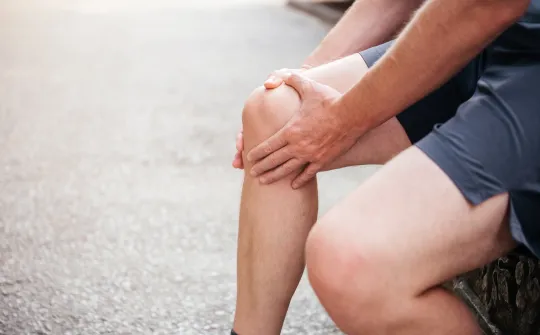Your treatment plan depends on the size, location, and severity of your meniscus tear. For minor tears, treatment typically begins more conservatively. No matter the severity of the tear, your meniscus cannot heal itself. However, with minor tears, you should still be able to function in your daily and athletic activities without the need for surgery.

Meniscus Repair
What is Your Meniscus
You have two C-shaped cartilage discs on either side of each knee that work to stabilize and protect your knee joints. These are your menisci. A meniscus lacks the blood supply to be able to heal itself, so a tear must be professionally diagnosed and repaired.
Is your knee locking as you walk? Do you feel a popping sensation or pain as it bends? Meniscus tears do not repair themselves and can affect your ability to exercise and perform daily activities. Our orthopaedic specialists in Austin, TX, can diagnose and repair your meniscus tear so you can get back to the activities you enjoy.

The Functions of Your Meniscus
Shock Absorber
stabilizer
What Puts You At Risk of Tearing Your Meniscus

Age
As we age, our cartilage naturally begins to wear down. As the meniscus gets thinner, it is more prone to tears.

Contact Sports
People who play sports like football, wrestling, and hockey have a higher chance of tearing their meniscus than people who swim or run.

Sharp Movements and Pivoting
Activities or sports that require you to pivot or make sudden stops, like basketball or tennis, put you at a higher risk of damaging your meniscus.

Obesity
Excess weight puts added stress on your joints and can speed up the natural aging process of your meniscus.
The symptoms of A Torn Meniscus
Meniscus tears range from minor to severe. The symptoms of your tear depend on the severity.
Minor Tear
Moderate tear
Severe Tear



Non-surgical Treatment of a Minor Meniscus Tear
R.I.C.E
Rest, ice, compression, and elevation (RICE), is usually the doctor's first recommendation after a joint injury. Rest is the first step, as you need to stay off your knee as much as possible the first few days. You should also wrap a compression wrap around your knee, and then ice and elevate it throughout the day. The RICE method decreases inflammation in the knee joint and promotes healing.
Medication
Depending on the severity of your pain, your doctor may prescribe you over-the-counter pain medication or non-steroidal anti-inflammatory drugs (NSAIDs). This will help you manage your pain and swelling while performing daily activities.
Physical Therapy
For minor to moderate tears that are not helped with RICE or medication, your doctor may prescribe physical therapy. Physical therapists will help strengthen the muscles around your knee joint. By strengthening these muscles, your joint achieves better support and stability, allowing you to get back to the activities you love.
Surgical Repair
If you are still suffering from knee pain after non-invasive treatments, your doctor may recommend surgery. The type of surgery we recommend depends on the severity of the tear. Ideally, your surgeon would not need to remove any of the menisci.
Arthroscopic Surgery
Arthroscopic Partial Meniscectomy
Arthroscopic Total Meniscectomy
Are There Any Risks Involved with Meniscus Surgery?
Complications and risks of arthroscopic repair are very rare, but not impossible. Nerve damage can occur and cause a change of sensation around your knee and leg. Call your doctor right away if you notice any signs of infection. Choosing experienced and reputable specialists to perform your surgery is one of the surest ways to minimize the risks of this procedure.

Recovery After Meniscus Repair
Once repaired, most patients can return home within a few hours of surgery. Your doctor will provide you with detailed instructions regarding your post-operative care. Your individual recovery timeline will vary depending on several circumstances. More severe tears require more extensive surgical repair and may lengthen your recovery period. Your recovery will also depend on the state of your health. Older patients, or those who suffer from a compromised immune system, will likely take longer to recover.